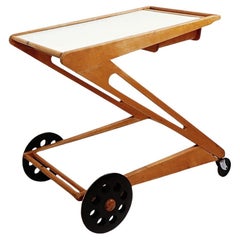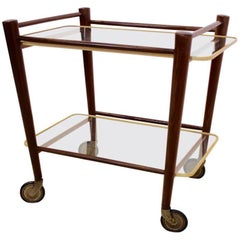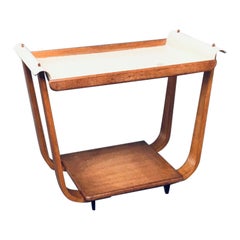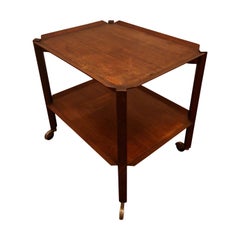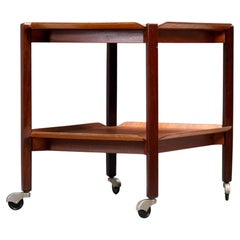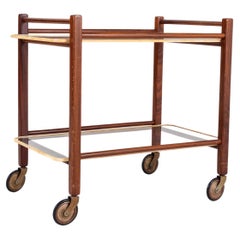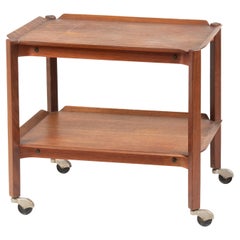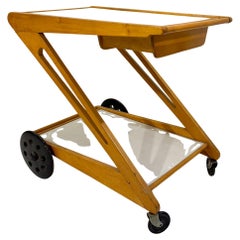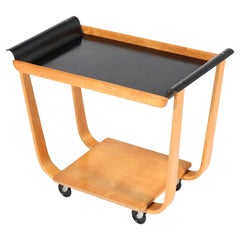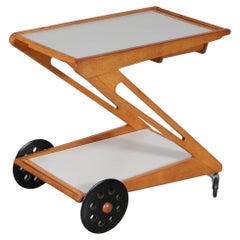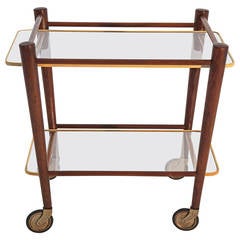Pastoe Trolley
Mid-20th Century Dutch Mid-Century Modern Carts and Bar Carts
Laminate, Birch
Mid-20th Century Dutch Mid-Century Modern Carts and Bar Carts
Glass, Teak
Vintage 1950s Dutch Mid-Century Modern Carts and Bar Carts
Birch, Plywood
Mid-20th Century Dutch Mid-Century Modern Carts and Bar Carts
Plywood
Mid-20th Century Dutch Mid-Century Modern Carts and Bar Carts
Metal
Vintage 1960s European Mid-Century Modern Carts and Bar Carts
Glass, Teak
Mid-20th Century Dutch Mid-Century Modern Carts and Bar Carts
Teak
Vintage 1950s Dutch Mid-Century Modern Dry Bars
Wood
Vintage 1950s Dutch Mid-Century Modern Serving Tables
Metal
Recent Sales
Vintage 1950s Dutch Carts and Bar Carts
Wood
Mid-20th Century Dutch Mid-Century Modern Carts and Bar Carts
Glass, Teak
Vintage 1950s Mid-Century Modern Carts and Bar Carts
Laminate, Birch, Oak
Vintage 1950s Dutch Mid-Century Modern Carts and Bar Carts
Mid-20th Century Dutch Mid-Century Modern Serving Tables
Plywood
Vintage 1950s Dutch Mid-Century Modern Dry Bars
Birch
Vintage 1960s Dutch Mid-Century Modern Carts and Bar Carts
Beech, Oak
Vintage 1950s Dutch Mid-Century Modern Carts and Bar Carts
Wood
Vintage 1960s Dutch Mid-Century Modern Carts and Bar Carts
Teak
Vintage 1950s Dutch Mid-Century Modern Carts and Bar Carts
Plywood
Vintage 1950s Danish Mid-Century Modern Coffee and Cocktail Tables
Plywood
Vintage 1950s Dutch Mid-Century Modern Serving Tables
Birch
Vintage 1950s Dutch Mid-Century Modern Serving Tables
Birch
Vintage 1950s Dutch Mid-Century Modern Serving Tables
Wood, Bentwood
Vintage 1950s Dutch Mid-Century Modern Serving Tables
Plywood
Vintage 1950s Dutch Mid-Century Modern Serving Tables
Brass
Vintage 1950s Dutch Mid-Century Modern Dry Bars
Mid-20th Century Dutch Mid-Century Modern Carts and Bar Carts
Teak
Vintage 1950s Dutch Mid-Century Modern Carts and Bar Carts
Metal
Vintage 1950s Dutch Mid-Century Modern Carts and Bar Carts
Brass
Mid-20th Century Dutch Mid-Century Modern Tray Tables
Birch
Vintage 1950s Dutch Mid-Century Modern Carts and Bar Carts
Metal
Vintage 1950s Dutch Mid-Century Modern Carts and Bar Carts
Metal, Brass
Vintage 1950s Dutch Mid-Century Modern Carts and Bar Carts
Laminate, Oak, Plywood
Vintage 1950s Dutch Mid-Century Modern Carts and Bar Carts
Oak, Plywood
Mid-20th Century Dutch Mid-Century Modern Carts and Bar Carts
Glass, Wood
Vintage 1970s Dutch Mid-Century Modern Carts and Bar Carts
Metal, Aluminum
Vintage 1950s Dutch Mid-Century Modern Carts and Bar Carts
Vintage 1950s Dutch Mid-Century Modern Serving Tables
Teak, Plywood
Vintage 1950s Dutch Mid-Century Modern Serving Tables
Plywood, Birch
Vintage 1950s Dutch Mid-Century Modern Serving Tables
Birch, Plywood
Vintage 1950s Dutch Mid-Century Modern Serving Tables
Birch, Plywood
Vintage 1950s Dutch Mid-Century Modern Dry Bars
Wood
Vintage 1950s Dutch Mid-Century Modern Serving Tables
Metal
Mid-20th Century Dutch Mid-Century Modern Tray Tables
Glass, Teak
Mid-20th Century Dutch Mid-Century Modern Serving Tables
Metal
Vintage 1950s Dutch Serving Tables
Birch
Vintage 1950s Dutch Mid-Century Modern Carts and Bar Carts
Metal
People Also Browsed
Mid-20th Century Swedish Scandinavian Modern Candle Sconces
Brass
21st Century and Contemporary European Neoclassical Benches
Iron
Mid-20th Century North American Mid-Century Modern Coffee and Cocktail T...
Ceramic, Walnut
21st Century and Contemporary Italian Modern Carts and Bar Carts
Metal
Vintage 1920s Dutch Art Deco Armchairs
Faux Leather, Oak
Vintage 1970s Italian Mid-Century Modern Carts and Bar Carts
Iron
Mid-20th Century Italian Art Deco Carts and Bar Carts
Brass
Vintage 1940s French Organic Modern Chairs
Straw, Rush, Oak
21st Century and Contemporary Italian Futurist Sofas
Steel
21st Century and Contemporary European Modern Coffee and Cocktail Tables
Travertine, Stone
Mid-20th Century Dutch Apothecary Cabinets
Beech
Early 20th Century French Apothecary Cabinets
Oak
Vintage 1980s American Post-Modern Console Tables
Laminate
Antique Early 1900s Late Victorian Vanities
Oak
Vintage 1950s Italian Wardrobes and Armoires
Brass
21st Century and Contemporary Danish Mid-Century Modern Carts and Bar Carts
Wood
Pastoe Trolley For Sale on 1stDibs
How Much is a Pastoe Trolley?
Cees Braakman for sale on 1stDibs
Revered Dutch mid-century modernist designer Cees Braakman had been creating furniture since his teenage years when he was promoted to head of design at UMS Pastoe in 1948. Today’s vintage furniture enthusiasts know that Braakman found inspiration in works by Scandinavian artisans such as Alvar Aalto and Herman Miller luminaries Charles and Ray Eames — Braakman’s clean-lined dining chairs, sleek sideboards and other case pieces are demonstrative of those influences.
UMS Pastoe was established in 1913 by German-Jewish entrepreneur Frits Loeb and became rapidly successful largely owing to its reputation for well-made tables and chairs. However, the Dutch brand is best known by collectors for the modular sideboards, storage cabinets and other spare, streamlined case pieces that it produced during the postwar years.
The Utrecht-born Braakman took over for his father, Dirk, who had by then been managing the company for more than 20 years and had designed a variety of furnishings for the manufacturer by himself. A year before he assumed his new role at Pastoe, Cees visited the United States where he became enamored with the designs of Charles and Ray Eames and the other creative minds associated with legendary American furniture manufacturer Herman Miller.
While many Dutch designers who are now celebrated by vintage furniture collectors — names like Gerrit Rietveld and Friso Kramer are in this list — found inspiration in Piet Mondrian and the country’s De Stijl art movement, they also looked to Scandinavian modernists such as Alvar Aalto and Americans such as the Eameses. Cees Braakman was no different.
Braakman’s 1940s-era tour to the States included a visit to the Herman Miller factory in Zeeland, Michigan. At the time, architect-designer-journalist George Nelson was director of design at the firm and had enlisted a range of designers to collaborate with Herman Miller and create what are now icons of mid-century modernism. Braakman took notice of industrial manufacturing techniques at HM and in particular, the company’s innovations in furniture design owing to experimentation with molded plywood and fiberglass-reinforced plastic.
The Dutch designer introduced the first line of modern furniture at UMS Pastoe thereafter — a table, a chair, a bed and more created in molded plywood and featuring oak veneers, specifically tailored for smaller living spaces. Braakman was convinced that Pastoe should move on from the restrictions that a collection or set of furniture presented to consumers.
Furniture for a bedroom, for example, should be practical and built as individual pieces that could be adapted as more space became available. New production methods and creative marketing came into focus under Braakman’s leadership, and his own lines of oak and birch furniture — which were created around cupboards that could be reconfigured as needed, or armchairs that could be combined to form a sofa — earned acclaim and were commercially very successful.
UMS Pastoe was recognized for its innovative furniture at the Milan Triennial in 1957 and Le Signe d’Or in Belgium, and Cees Braakman’s work can today be found at the Stedelijk Museum in Amsterdam.
Find vintage Cees Braakman furniture on 1stDibs.
A Close Look at Mid-century Modern Furniture
Organically shaped, clean-lined and elegantly simple are three terms that well describe vintage mid-century modern furniture. The style, which emerged primarily in the years following World War II, is characterized by pieces that were conceived and made in an energetic, optimistic spirit by creators who believed that good design was an essential part of good living.
ORIGINS OF MID-CENTURY MODERN FURNITURE DESIGN
- Emerged during the mid-20th century
- Informed by European modernism, Bauhaus, International style, Scandinavian modernism and Frank Lloyd Wright’s architecture
- A heyday of innovation in postwar America
- Experimentation with new ideas, new materials and new forms flourished in Scandinavia, Italy, the former Czechoslovakia and elsewhere in Europe
CHARACTERISTICS OF MID-CENTURY MODERN FURNITURE DESIGN
- Simplicity, organic forms, clean lines
- A blend of neutral and bold Pop art colors
- Use of natural and man-made materials — alluring woods such as teak, rosewood and oak; steel, fiberglass and molded plywood
- Light-filled spaces with colorful upholstery
- Glass walls and an emphasis on the outdoors
- Promotion of functionality
MID-CENTURY MODERN FURNITURE DESIGNERS TO KNOW
- Charles and Ray Eames
- Eero Saarinen
- Milo Baughman
- Florence Knoll
- Harry Bertoia
- Isamu Noguchi
- George Nelson
- Danish modernists Hans Wegner and Arne Jacobsen, whose emphasis on natural materials and craftsmanship influenced American designers and vice versa
ICONIC MID-CENTURY MODERN FURNITURE DESIGNS
- Eames lounge chair
- Nelson daybed
- Florence Knoll sofa
- Egg chair
- Womb chair
- Noguchi coffee table
- Barcelona chair
VINTAGE MID-CENTURY MODERN FURNITURE ON 1STDIBS
The mid-century modern era saw leagues of postwar American architects and designers animated by new ideas and new technology. The lean, functionalist International-style architecture of Le Corbusier and Bauhaus eminences Ludwig Mies van der Rohe and Walter Gropius had been promoted in the United States during the 1930s by Philip Johnson and others. New building techniques, such as “post-and-beam” construction, allowed the International-style schemes to be realized on a small scale in open-plan houses with long walls of glass.
Materials developed for wartime use became available for domestic goods and were incorporated into mid-century modern furniture designs. Charles and Ray Eames and Eero Saarinen, who had experimented extensively with molded plywood, eagerly embraced fiberglass for pieces such as the La Chaise and the Womb chair, respectively.
Architect, writer and designer George Nelson created with his team shades for the Bubble lamp using a new translucent polymer skin and, as design director at Herman Miller, recruited the Eameses, Alexander Girard and others for projects at the legendary Michigan furniture manufacturer.
Harry Bertoia and Isamu Noguchi devised chairs and tables built of wire mesh and wire struts. Materials were repurposed too: The Danish-born designer Jens Risom created a line of chairs using surplus parachute straps for webbed seats and backrests.
The Risom lounge chair was among the first pieces of furniture commissioned and produced by celebrated manufacturer Knoll, a chief influencer in the rise of modern design in the United States, thanks to the work of Florence Knoll, the pioneering architect and designer who made the firm a leader in its field. The seating that Knoll created for office spaces — as well as pieces designed by Florence initially for commercial clients — soon became desirable for the home.
As the demand for casual, uncluttered furnishings grew, more mid-century furniture designers caught the spirit.
Classically oriented creators such as Edward Wormley, house designer for Dunbar Inc., offered such pieces as the sinuous Listen to Me chaise; the British expatriate T.H. Robsjohn-Gibbings switched gears, creating items such as the tiered, biomorphic Mesa table. There were Young Turks such as Paul McCobb, who designed holistic groups of sleek, blond wood furniture, and Milo Baughman, who espoused a West Coast aesthetic in minimalist teak dining tables and lushly upholstered chairs and sofas with angular steel frames.
Generations turn over, and mid-century modern remains arguably the most popular style going. As the collection of vintage mid-century modern chairs, dressers, coffee tables and other furniture for the living room, dining room, bedroom and elsewhere on 1stDibs demonstrates, this period saw one of the most delightful and dramatic flowerings of creativity in design history.
Finding the Right Tables for You
The right vintage, new or antique tables can help make any space in your home stand out.
Over the years, the variety of tables available to us, as well as our specific needs for said tables, has broadened. Today, with all manner of these must-have furnishings differing in shape, material and style, any dining room table can shine just as brightly as the guests who gather around it.
Remember, when shopping for a dining table, it must fit your dining area, and you need to account for space around the table too — think outside the box, as an oval dining table may work for tighter spaces. Alternatively, if you’ve got the room, a Regency-style dining table can elevate any formal occasion at mealtime.
Innovative furniture makers and designers have also redefined what a table can be. Whether it’s an unconventional Ping-Pong table, a brass side table to display your treasured collectibles or a Louis Vuitton steamer trunk to add an air of nostalgia to your loft, your table can say a lot about you.
The visionary work of French designer Xavier Lavergne, for example, includes tables that draw on the forms of celestial bodies as often as they do aquatic creatures or fossils. Elsewhere, Italian architect Gae Aulenti, who looked to Roman architecture in crafting her stately Jumbo coffee table, created clever glass-topped mobile coffee tables that move on bicycle tires or sculpted wood wheels for Fontana Arte.
Coffee and cocktail tables can serve as a room’s centerpiece with attention-grabbing details and colors. Glass varieties will keep your hardwood flooring and dazzling area rugs on display, while a marble or stone coffee table in a modern interior can showcase your prized art books and decorative objects. A unique vintage desk or writing table can bring sophistication and even a bit of spice to your work life.
No matter your desired form or function, a quality table for your living space is a sound investment. On 1stDibs, browse a collection of vintage, new and antique bedside tables, mid-century end tables and more .
